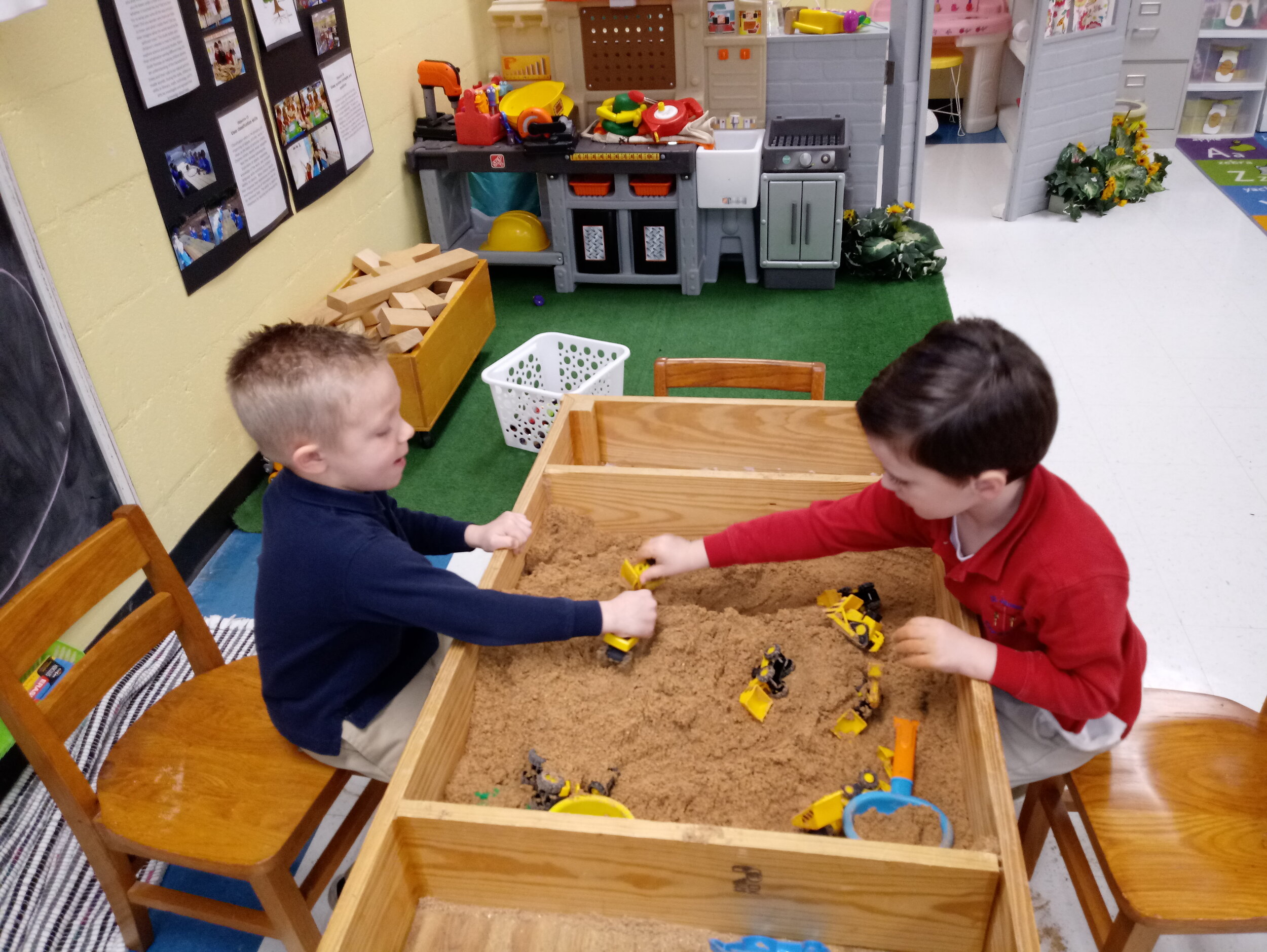Grandparents Day is Friday, February 14th and we’ve been practicing for our show. We even went on an adventure to Grandma's house to invite her to come and watch. On the way there we ran into a couple of obstacles. The boys and girls learned how to participate in a group situation, number concepts and operation (under, over, or through), Traveling skills, to think symbolically, and the use of ordinal numbers (1st, 2nd, & 3rd). With all the rain this was a fun indoor activity.
Bringing The Outside In
Since we couldn’t go outside, we brought the outside in. Using a sand table and construction vehicles, we were able to pretend that we were leveling the land for a good foundation. We discussed how important a foundation was to be built level ground. We discussed the vocabulary words foundation and level.
I Scream You Scream We All Scream For Ice Cream!
What makes buildings strong? We continued our discussion on how important it is to have a good foundation for a strong building. During snack time we used an ice cream sandwich for our foundation and created our own buildings. The boys and girls had fun designing and eating what they created.
Who builds buildings and what tools do they use?
I asked everyone our focus question and wrote down their answers. They said a construction worker and named several tools (hammer, drill, backhoe, and saw.) We also had a construction worker visit our class. Mr. Anthony discussed how he builds buildings and what tools he uses. He also passed around tools for the children to examine.
A Visit From The Tooth Fairy
A surprise visit from the Tooth Fairy. We discussed how to take care of our teeth and what causes cavities. She also sprinkled Tooth Fairy Dust on the boys and girls to help them remember to brush their teeth twice a day.
Classifying & Tally
Classification is a fundamental pre-number learning concept that children learn about the world around them. Once they have classified items, children can compare items further to learn more specific similarities and differences between items, both within and between matched groups. Using a color chart, we classified heart-shaped candy. Each student had to count how many pieces were in each color. This was a fun activity but I think everyone enjoyed eating the candy the most. One of them said "I better brush my teeth tonight so I don't get a cavity."





















































































